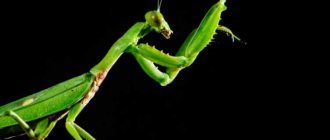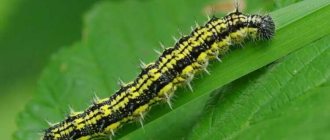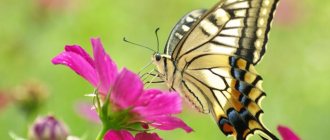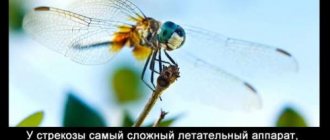Crabs are arthropods that inhabit many bodies of water on Earth. They are found in every sea (they generally like salt water), and some species can also live in fresh rivers or spend part of their lives on land rather than under water. Thanks to its wide habitat, crab meat is included in the cuisine of coastal regions of the world. However, crab production is limited, so it is considered a delicacy and is quite expensive.
Next, the structure of this arthropod will be examined in more detail with an answer to the question of how many legs crabs have and how they use them.
Features of existence
Before we consider how many legs a crab has, we should tell you in more detail about the peculiarities of life of this aquatic inhabitant.
They can live:
- in the sea;
- in fresh water;
- partially on land (but they definitely need access to water; without it they die).
One way or another, it is quite difficult for crabs to survive. Not only people love to feast on their meat: there are many aquatic predators who happily eat sluggish arthropods. In order to escape from ill-wishers, find shelter and food for itself, the crab uses not only the agility of its legs, but also its developed senses.
Note! The crab needs not only to protect itself from attack and get food, but also to look for partners for mating and reproduction. The female carries the eggs within herself, and when the larvae hatch, she sends them into free swimming.
The crab has very sharp eyesight, but it is not limited to this. Very sensitive antennae, as well as eye stalks (the latter rather provide relatives with information about the sexual maturity of the individual), help him assess the surrounding environment. Different sense organs collect a complex picture of the surrounding world, which is formed in the arthropod’s brain.
This aquatic inhabitant has no skin. Instead, the body is protected by a rough layer of chitin, which is difficult to damage. There is also a protective shell in which, in case of danger, you can hide completely - along with your paws. During growth, the young individual sheds its shell several times and grows a new one, in size.
General characteristics of seafood
Crabs are an infraorder of decapod crustaceans. An acceptable name is short-tailed crayfish. Crabs are among the oldest creatures, with known fossils dating back to the Jurassic period. It is clear that these fossils are the distant ancestors of modern crustaceans, which are called primitive crabs.
Content:
- General characteristics of seafood
- Beneficial features
- Chemical composition
- How to eat seafood correctly
- Use of the ingredient in cooking
- Contraindications for use
The head of the arthropod is small and flattened. The abdomen is short, symmetrical, protects the internal cavity of the crab and bends behind the jaw-thorax. Animals differ by gender. The abdominal limbs of males are transformed into a copulatory organ, and of females - into special organs for bearing eggs.
Crabs live both in the seas or fresh water bodies, and on land. Today, about 4 thousand species of arthropods are known. Most of them are used in the food industry. The size of the animal depends on the specific variety. For example, on the shores of Japan live giant crabs Macrocheira kaempferi, which weigh about 20 kilograms, and the size of their limbs reaches 4 meters.
Crabs make up 20% of all marine crustaceans that are caught, farmed and sold. About 1.5 million tons of arthropods are used annually in the food industry.
All crabs, except freshwater ones, reproduce in water. The metamorphic development of an animal looks something like this: the emergence of a pelagic larva from eggs (zoea), then transformation into a full-fledged larva (megaola), after which transformation into an adult arthropod. Freshwater crabs skip the larval stage.
Arthropods are capable of independently breaking off their limbs. This technique is most often used when a crab is being chased by a predator. In place of broken limbs, new, absolutely healthy organs grow, which quickly begin to function.
How many limbs does a crab have?
Many people are interested in the questions: how many legs does a crab have and how does it use them? In total it has 10 limbs, five on each side (they are located more or less symmetrically to the body). However, the crab does not use all its paws as legs for locomotion.
The first three pairs of paws serve him for feeding - with them he grabs food and brings it to his mouth, and also pushes it down the throat. But on the last two pairs of legs he just runs, and, if necessary, very quickly. On the first pair of front legs, crabs have claws: these are both a weapon and a “cutlery” for cutting food. With the help of claws, he grabs food and fights in defense or when fighting with other males (this happens during the breeding season, when you need to win a female).
Interesting fact! When answering the question of how many limbs a crab has, the Kamchatka crab should be mentioned separately. He only has six legs and two claws visible, that is, a total of eight limbs. The fact is that this species of arthropod has another pair of legs hidden under the shell. Also because of this structural feature, Kamchatka crab is classified as a carboid species.
Chemical composition
Nutritional value (per 100 grams of raw Kamchatka crab)
| Calorie content | 96 kcal |
| Squirrels | 18.2 g |
| Fats | 1 g |
| Carbohydrates | 0 g |
| Alimentary fiber | 0 g |
| Water | 78.9 g |
| Ash | 1.9 g |
Vitamin composition (in milligrams per 100 grams of raw Kamchatka crab)
| Retinol (A) | 0,03 |
| Thiamine (B1) | 0,05 |
| Riboflavin (B2) | 0,08 |
| Niacin (B3) | 2,5 |
| Pantothenic acid (B5) | 0,6 |
| Pyridoxine (B6) | 0,35 |
| Folic acid (B9) | 0,02 |
| Cobalamin (B12) | 0,001 |
| Ascorbic acid (C) | 1 |
| Tocopherol (E) | 1,5 |
| Nicotinic acid (PP) | 3 |
Balance of micro- and macroelements (in milligrams per 100 grams of raw Kamchatka crab)
| Potassium (K) | 310 |
| Calcium (Ca) | 100 |
| Magnesium (Mg) | 50 |
| Sodium (Na) | 250 |
| Sulfur (S) | 182 |
| Phosphorus (P) | 260 |
| Iron (Fe) | 4,3 |
Crab as a food product for humans
Individuals can vary in size and amount of edible product - it all depends on the season, place of extraction and maturity of the individuals.
The following are used as food:
- paws;
- meat from the places where the legs adjoin the body;
- caviar.
The crab meat is white. They eat the food that is located in the paws and the places where the legs join the body. In most cases, the crab is boiled: the legs are separated from the body and boiled whole in boiling, slightly salted water. Boiled meat can be served immediately, or frozen or canned.
Note! The claws themselves are too hard and unsuitable for human consumption. But meat may be located next to them - it is used as food.
Dishes are served in different ways. In some restaurants, the arthropod is kept alive in an aquarium and cooked whole at the request of visitors (the legs are eaten). They also make soup, pasta, salads and other dishes with crab - it has an unusual taste, which is especially appreciated by residents of coastal regions. In Russia, you can try real fresh crab, for example, in the Primorsky Territory and Kamchatka.
Next we will talk in more detail about crab production in other Russian regions.
Beneficial features
Arthropod meat contains a high concentration of beneficial active substances that make the body healthier and the person himself happier. The content of essential acids in crab is several times higher than that in fish and other seafood. These are: 80% moisture, 1.4% lipids, 19% protein, 2% ash, 2% glycogen.
Crabs are record holders for Sodium (Na) content.
Crab meat is considered a dietary product. Nutritionists advise including it in the diet of those losing weight and those who are watching their figure. But we should not forget about the dosage: meals consisting of seafood should not appear on the menu more than 3 times a week.
Due to the vitamin (taurine, tocopherol, ascorbic acid) and nutrient (polyunsaturated fatty acids, iodine, zinc, calcium) composition, the product is useful for anemia, deterioration of the organs of vision and cardiovascular pathologies.
What else is useful for crab meat:
- strengthens the heart muscle;
- reduces cholesterol levels in the blood and maintains its permanent indicator;
- protects the body from pathologies of the heart and blood vessels (serves as a kind of prevention);
- normalizes the level of thyroid hormones and improves the functionality of the endocrine system;
- promotes increased visual performance, combats the problem of dry eyes;
- improves the digestive system, “accelerates” metabolism and promotes better digestibility of foods;
- fights strong psycho-emotional stress, protects the nervous system from depression and anxiety;
- uplifts the mood and gives a feeling of peace;
- prevents premature aging of all body systems and skin;
- acts as an aphrodisiac and increases libido in both partners.
Acclimatization and fishing in the Barents Sea
In Russia, crab is mined mainly in the Far East. Due to the large area of our country, this caused difficulties: a hundred years ago it was practically impossible to quickly deliver meat over 7-10 thousand kilometers. Of course, they still did it, but transportation was very expensive.
Then the government of the Soviet Union decided to try to relocate the Kamchatka crab to the Barents Sea (it washes Russia from the north and is much closer to the capital and the central part of the country). The first attempt at such a relocation was made in 1932, but it was not successful - the authorities could not figure out how to quickly and safely transport the arthropods. The project was frozen, and then the war with Nazi Germany happened.
The second attempt to transport these arthropods to the Barents Sea was made in 1951. But even then the matter did not end in success: the crabs lived in containers with water for no more than two days, and this was too little for transportation.
Note! In Russia, a very popular product is crab sticks. They are so called because of their similar taste, but they are actually made not from crab meat, but from ground white fish.
The crab was first brought to the Barents Sea in 1960. Delivery was by plane, which helped to achieve the plan - air transportation is much faster than land transportation. Individuals continued to be imported in 1961-1969 and 1977-1978.
Currently, crabs live and reproduce quite successfully in the Barents Sea. Despite active fishing, the number of individuals is growing - production is limited by special quotas so that people do not threaten the natural population of arthropods. In addition, fishing makes it possible to limit the destructive impact of crabs on marine flora and fauna: these creatures are omnivores and therefore massively eat valuable species of mollusks, crustaceans and sea urchins.
Interesting fact! Crabs can only be caught during a specific fishing season, when they are not molting or spawning. Harvesting outside of this season is considered illegal and is punishable by heavy fines or even criminal sentences.
In the Barents Sea you can catch:
- only male crabs;
- only those whose size exceeded 15 centimeters;
- only from mid-August to mid-December;
- only with special bottom traps.
If females or young crabs are caught in the trap during fishing, they must be released back into the water without harm. These individuals are needed to maintain the natural population of the species, and not to be eaten.
How to eat seafood correctly
If the meal is at home, then lay thick paper, another tablecloth, or even a few newspaper pages on the table. Cutting a crab will bring real chaos to your home in the form of mess, juice and pieces of crustacean flesh. Take care of yourself in advance and reduce your cleaning time.
In a fish restaurant, you are served with a special hammer for the crab, tongs for splitting the claws, a dull knife and a special oblong device with a point at the end. Anything will work for a home meal: any knives, forks, and even a device for cracking nuts.
As soon as a toasted representative of the deep sea appears on the plate in front of you, proceed to active actions. Using rotating movements, tear the legs and claws away from the body. If you don’t want to tear off the legs with your hands (or you don’t have the strength), then use a dull knife. The knife is inserted into the junction point between the base of the claw/leg and the body of the crustacean. Lightly press on this point and the leg will literally fall off on its own. Remove the meat from the legs using an oblong, pointed tool. The claws must be crushed, cleaned, and the remaining meat must be removed using utensils.
Turn the crab onto its back, belly up. Separate the chest section from the shell (it can be easily removed from the base of the carcass when the claws and legs are separated). Take the opened upper part of the shell in your hands and break it in half. Remove inedible green/brown compounds from the meat and enjoy your meal.
What to pay attention to when cutting seafood
- Cartilage. Each claw contains dense cartilage. There is no need to eat it (and you won’t be able to), so cut the claws carefully and thoroughly to avoid inedible elements.
- Spikes. The crustacean's shell is covered with small spines, which, when pressed hard, can cause pain. Be careful and make the most of your available tools.
- Small dense elements. The crab's body is filled with small bones, cartilage and various compounds that are unsuitable for consumption. They can damage the mucous membrane or simply get stuck in the esophagus. Be careful and double check the meat you are about to put into your mouth.
Younger generation
Crabs are not mammals, so mother crabs do not spend time with the babies to teach them how to survive in a hostile environment. When the larvae hatch, they immediately go free swimming and hide from anyone who wants to eat them (for example, from octopuses, large fish or starfish). In order to protect themselves from predators, they camouflage themselves, since they do not yet know how to protect themselves, and strong claws do not form immediately.
Over time, individuals grow and can already protect themselves with claws. However, at first they use passive methods of defense, but if that doesn’t help, then they attack in response. Interestingly, in a critical situation, a crab can tear out a limb and leave it for the enemy to eat, while he himself escapes (his legs allow him to quickly move sideways). In this case, the wound will quickly heal without causing pain, and the paw will grow back naturally after a few molts.
Use of the ingredient in cooking
Recipe for ravioli with crab and apples
We will need:
- drinking yogurt (milk-based without flavors and sweeteners) – 150 ml;
- Greek yogurt – 10 ml;
- gelatin – 1 sachet/piece;
- crab meat – 50 g;
- green apples (with a sour taste) – 40 g;
- avocado (choose ripe dark green fruit) – 1 piece;
- cream (any fat content) – 10 ml;
- cilantro (can be replaced with your favorite herbs) – 5 g;
- lemon or lime juice – 3 ml.
Preparation
Prepare gelatin according to the instructions on the package (depending on the specifics of the gelatin). Mix the prepared gelatin with drinking yoghurt, mix the ingredients until you get a homogeneous liquid mass. Prepare a baking sheet: line it with parchment paper and spread the gelatin-yogurt mixture evenly over it. Place the baking sheet in a dry, dark place until the mixture hardens. As soon as the gelatin has set and the yogurt has hardened, cut out circles from the frozen plate. The size of the circle depends on the desired size of the ravioli.
Grind half the avocado in a blender, then pour in the cream. Place the resulting mousse in the refrigerator. Grind the other half of the avocado and mix with chopped crab meat, herbs and apples. Season the apple-meat salad with lemon/lime juice and Greek yogurt.
Place the finished filling inside circles of yogurt and gelatin and form ravioli. Serve with avocado mousse immediately after cooking.
Recipe for California rolls with crab meat
Culinary fact: “California” was invented by the Japanese Ichiro Masita specifically for the American people. But the dish became international and, as fate would have it, became especially popular among the Slavs.
We will need:
- rice (recommended to use nishiki) – 150 g;
- vinegar for making sushi and rolls – 2 tablespoons;
- crab meat – 200 g;
- avocado (choose a fruit with a dense structure) – 100 g;
- Japanese mayonnaise – 40 ml;
- tobiko (caviar) – 100 g;
- nori (dried seaweed) – 5 pcs;
- wasabi and pickled ginger to taste.
Preparation
Rinse the nishiki rice in cold water. Rinse until the water is crystal clear. There is no need to grind the rice or intensively peel each grain of rice. It is important that the grains are not broken or damaged. Rice is the main ingredient of the rolls, so it must be cooked perfectly. Gently stir the rice under running water, then transfer to a sieve, place inside a large saucepan and allow any excess liquid to drain. Rice needs 15-20 minutes to get rid of moisture and dry completely.
Boil the rice in a special rice cooker or follow the instructions on the package. Once the rice is cooked, leave it in the covered container for another 15-20 minutes. During this time, the cereal will cool, become denser and easily take the desired shape. Add the roll vinegar to the warm rice and knead until the liquid is completely absorbed. Lightly dampen the towel, cover the pan with rice and let sit for another 20 minutes.
Boil the crab for 20 minutes in filtered water without salt and spices, then cool. Remove the meat from the second phalanx (this is where it is the most delicious and juicy) and finely chop. Peel the avocado and cut into narrow slices.
Form a roll in the following sequence: nori sheet, rice, avocado, Japanese mayonnaise, crab meat. Roll up and dip tobiko in caviar. Carefully cut off the edges of the roll and cut it into several portions. Place the dish on a plate and serve with ginger, wasabi and soy sauce immediately after cooking.
Migration and habitat
To find food, arthropods migrate within their habitat. Its appearance in a new ecosystem means that soon the small inhabitants of these places will suffer a loss in their numbers. The Kamchatka crab is not distinguished by its “economical” attitude to nutrition; it does not finish eating its prey, always leaving something untouched.
This representative of crayfish lives in sea water; the largest concentration of the species is observed in the northern part of the Pacific Ocean, as well as in the Sea of Okhotsk. The king crab prefers cool water, a bottom consisting of sand or mud, and can live at depths of up to 270 meters when winter sets in. In the warm season, it lives on a shallower bottom, from 2 m. The salinity of the water should be average.
When spring comes, instinct makes the king crab move towards the shore. There is more food in shallow water and it is warmer there. Thus, favorable conditions for reproduction are created. Migration occurs in groups, with males and females moving separately from each other.
Now when your hands reach the crab, they will know what to do.
Until the mid-20th century in the Soviet Union, crab, oddly enough, was not considered a delicacy, so was its availability and low price. Decades passed, crab sticks (a fish product, by the way), began to be put into crab salad and the rolls that appeared, and crab was considered an ingredient of the highest gastronomic echelon.
Now the situation is changing again, and everything is returning to normal: in a large number of restaurants you can try crab in various variations, moreover, there are even festivals that allow you to do this from Moscow to Vladivostok at a reduced price.
So that you don’t get lost and can tame this complex “beast,” we tell you how to cut and eat crab correctly. The Zuma restaurant, which is located in Vladivostok (of course!) and is the organizer of one of these all-Russian festivals, helped us make instructions.
Phalanx
They begin cutting the crustacean directly from the limbs, which are torn off from the carcass using circular manipulations. But it will be difficult for new people to get meat from them. How to eat crab claws correctly:
- How to cut using a sharp knife - you need to stick it with the blade into the center of the claw and lightly beat it on the handle with a hammer. When the knife enters the chitin approximately 5-7 mm, it must be turned to the side and the hard surface will burst, revealing the meat.
- How to cut using tongs - initially they tear off the claws from the leg, then crush them. The method is not very good: fragments of the claw remain in the meat.
- Another cutting step is the phalanges. It is easier to simply cut them with ordinary scissors, breaking them at the joint.
The best way to learn how to eat such seafood is to cook it at home and slowly cut it up, following the recommendations of any training video. If you had to get acquainted with boiled crab in some establishment or at a party, it would be great to know some rules of etiquette in advance.
At the restaurant
Having ordered such a delicacy, you need to ask the chef to serve it open - this is the easiest way out of trouble.
To cut and clean it yourself, the visitor will be given tools: scissors-tongs, a long knitting needle with two tiny teeth at the end, and a simple fish fork. Here is the correct procedure:
- first the claws and paws are twisted;
- then they need to be crushed with tongs;
- then the shell is cut with scissors, the gills and entrails are cut out;
- then the meat is taken out from the paws using a knitting needle, and from the claws using a fish fork;
- and the meat from the “rose” is eaten.
Reference! On one side of the fish fork there is a small spoon - it is used to scoop out liquid, which is contrary to the rules of etiquette.
The restaurant will also provide you with a damp cloth or a plate of water - you will need them to wipe your hands after eating.
pixabay.com
Natural enemies of Kamchatka crabs
Photo: King Crab
Adult large representatives of the species have few natural enemies, since the crab has excellent protection - a reliable and durable shell, which in addition is covered with sharp spine-like needles. Only large marine mammals are able to overpower an adult crab.
Smaller individuals have a greater number of enemies, among them:
- predatory fish;
- Pacific cod;
- halibut;
- sea otter;
- bulls;
- octopuses;
- large crabs of different species (intraspecific cannibalism is noted).
During the molting period, the crab becomes absolutely vulnerable and is forced to seek shelter. Man is not one of the natural enemies of the species, however, given uncontrolled commercial fishing and poaching, man has every chance of becoming a species enemy. Therefore, quotas for catching royal arthropods are determined at the state level in order to use population reserves as carefully as possible without undermining their numbers and ability to recover.
Human activities indirectly negatively affect marine life, in particular the Kamchatka crab. Industrial chemical waste, plastic, and petroleum products pollute the vast seas and oceans, negatively affecting all flora and fauna. As a result, entire species are vulnerable to depletion or are on the verge of extinction.
Social structure and reproduction
Photo: Sea Kamchatka crab
After the onset of spring, males begin their journey to shallow water. Females move in the same direction, but in separate groups. The female carries already ripe eggs on legs located near the abdomen. Closer to shallow water, larvae emerge from the eggs and are carried away by the current. By this time, new eggs have already been formed in the female’s genital organs, which are yet to be fertilized.
With the beginning of molting, individuals of both sexes come closer and form a characteristic pose - the male holds the female with both claws, reminiscent of shaking hands. The holding continues until the end of the moult; sometimes the male helps the chosen one to free herself from the old frame. After the completion of molting (on average from three to seven days), the male releases a ribbon with germ cells - spermatophores, which is attached to the female’s legs. The male, having completed the mission, leaves and also molts.
After some time (from several hours to several days), the female spawns eggs (from 50 to 500 thousand), which, when they meet the male’s ribbon, are fertilized. A special sticky substance collects the eggs together and attaches them to the villi on the female's abdominal legs, where they undergo a development cycle until the following spring, for 11 months. The female spawns eggs only once a year, in the spring, but males can mate with several females.
The larvae that have just hatched from the eggs remain in the water column for about two months and are transported by the current; at this stage of development, up to 96% of the larvae die. Afterwards, the surviving larvae sink to the bottom, into algae thickets, where they live for three years. They molt frequently and go through several stages of development. Then the young individuals move to sandy bottom areas. Migration begins after reaching 5 years of age, sometimes 7 years of age.
At home
At home, this seafood also needs to be cooked. There are no difficulties in cooking crab - it is cooked in a pan of optimal volume, placing it in boiling, well-salted water for 15 minutes. Among the spice seasonings, bay leaf and black pepper are good options; you can use a special mixture of spices for seafood delicacies. When the crab shell changes color and is red, place it in a colander to cool slightly.
It is easier to prepare blue or snow delicacy than Kamchatka crab, which weighs from 3 to 7 kg. and refers to a giant. To cook such crab you will need a fairly deep vessel. The taste and aroma of this crab, from the point of view of most lovers, is more pronounced than that of its small relatives.
What to serve with
Like all delicacies, such meat can be consumed as a separate dish or added as an ingredient to salads. You can also fry the meat and put it in the filling for rolls.
What this delicacy tastes like and what it is best paired with usually depends on the production method and sauces. A universal option is to serve crab with boiled rice and fresh vegetables. Most lovers prefer to eat seafood separately from other dishes.
At home, you can combine crab with grated cheese, egg and mayonnaise, and avocado slices. A good combination would be carrot or spinach puree. In public establishments, visitors will be offered the most unusual methods: frog caviar, orange mousse. It can also be combined in batter, lower the phalanges, sprinkle with breadcrumbs and fry - the name of the culinary masterpiece is “crab sticks”.
As for alcoholic beverages, everything is subject to personal wishes. Typically, crab meat is eaten while enjoying white wine or champagne, but for meetings with friends you can buy weak, good beer.
What does the king crab eat?
Photo: Kamchatka king crab
The food for this species is very diverse and the crab is inherently an omnivorous predator.
Food objects are all inhabitants of the seabed:
- various shellfish;
- plankton;
- worms;
- sea urchins;
- crustaceans;
- ascidians;
- small fish;
- sea stars.
- algae;
- hydroid organisms;
- worms.
During their lives, representatives of this species make mass movements for food purposes. Moving from one ecosystem to another, the dominant species in a particular system become food.
Powerful claws serve as an excellent tool, and the crab easily obtains the necessary food. Moreover, when killing the prey, the crab does not eat it completely, and most of its mass is lost. Crabs also eat the corpses of fish and other marine organisms, acting as a water purifier. After the introduction of the crab into the waters of the northern seas, there is still no clear opinion about the impact of the settler on local biosystems as a whole.
Some scientists criticize the experiment, fearing for the presence and numbers of native species of inhabitants of the northern seas, with which the Kamchatka crab competes in nutritional needs and on which it feeds. After all, by consuming certain types of organisms en masse, the crab can lead to their depletion and even extinction. Other scientists speak favorably of the results of the introduction, emphasizing economic benefits.
Interesting fact. At different periods of their life cycle, arthropods prefer different foods. For example, an individual that is about to molt in the near future preferably chooses organisms with a high calcium content, such as echinoderms, as food.
At home
At home, crab also needs to be cooked. There are no difficulties in preparing the delicacy - the crustacean is boiled in a suitable-sized container, thrown into hot, heavily salted water for 10-15 minutes. Among the seasonings, bay leaves and peppercorns are welcome; a special mixture of spices for seafood can be used. When the crab shell turns red, place it in a colander and let it cool a little.
It is easier to cook a blue or snow crab than a giant from Kamchatka, which weighs from 3 to 7 kg and is a real giant. To prepare it you will need a very large container. But its taste, according to many gourmets, is brighter than that of its smaller counterparts.
What do you think tastes better?
- Shrimp 37%, 1316 votes 1316 votes 37%
1316 votes - 37% of all votes











